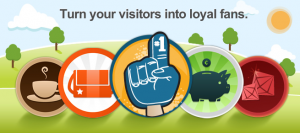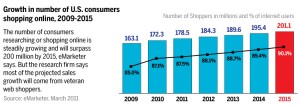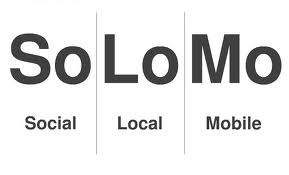
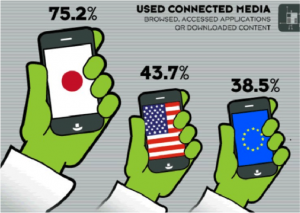 If you (just as I am) are one out of three mobile phone users, you probably read this on your smartphone!? A recently conducted study by Nielson revealed that over 43% of all US mobile phone owners have a smartphone as of October 2011 and that even 62% of the so-called „Generation App“ (people aging 25-34 years) own Smartphones.
If you (just as I am) are one out of three mobile phone users, you probably read this on your smartphone!? A recently conducted study by Nielson revealed that over 43% of all US mobile phone owners have a smartphone as of October 2011 and that even 62% of the so-called „Generation App“ (people aging 25-34 years) own Smartphones.
Nowadays we are not only looking for local information, companies, news, services and deals on our PCs while we are at home, but rather on our smartphones or our tablets while we are on the go. Greg Sterling, senior analyst with San Francisco-based consultancy Opus Research says SoLoMo „[…] is about getting nearby information on demand, wherever you may be.”
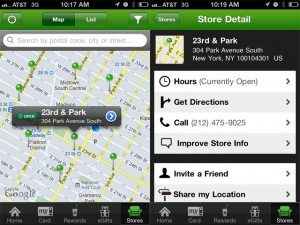 Although I would consider myself rather as being part oft he Late Majority (regarding to The Everett Rogers Diffusion of innovations theory), one of my friends is an “E-Fan” or let’s say Early Adopter, in order to stick to technical terms ;). She has just recently brought my attention to a great app Starbucks offers. Starbucks uses geo-location tactics, in order to facilitate life for shoppers craving a cup of nice coffee by showing the closest store to the consumer’s current location as a result of using the app. Here I have a video for you to show how easy such applications are to use.
Although I would consider myself rather as being part oft he Late Majority (regarding to The Everett Rogers Diffusion of innovations theory), one of my friends is an “E-Fan” or let’s say Early Adopter, in order to stick to technical terms ;). She has just recently brought my attention to a great app Starbucks offers. Starbucks uses geo-location tactics, in order to facilitate life for shoppers craving a cup of nice coffee by showing the closest store to the consumer’s current location as a result of using the app. Here I have a video for you to show how easy such applications are to use.
Moreover companies like DDR Corp., which owns hundreds of U.S. shopping centers, take it to the next level and incorporate a so-called geofencing technology. DDR Corp. does not only offer information as the customer „pulls“ but also „pushes“ information (by texting deals from retail tenants within those malls) on their smartphones as soon as the customer enters a mall’s border. For those of you who are concerned about protection of data privacy, geofencing – similar to Canada’s anti-spam legislation (CASL) – takes a Consumer opt-in approach. So, only those shoppers who enter a mall’s border and who additionally have opted-in to the service receive text messages about sales, special offers and promotions happening in real time.
SoMoLo makes it possible for companies to offer consumers a highly-personalized shopping experience — and I think not only the technology is ready now, but so are we!

